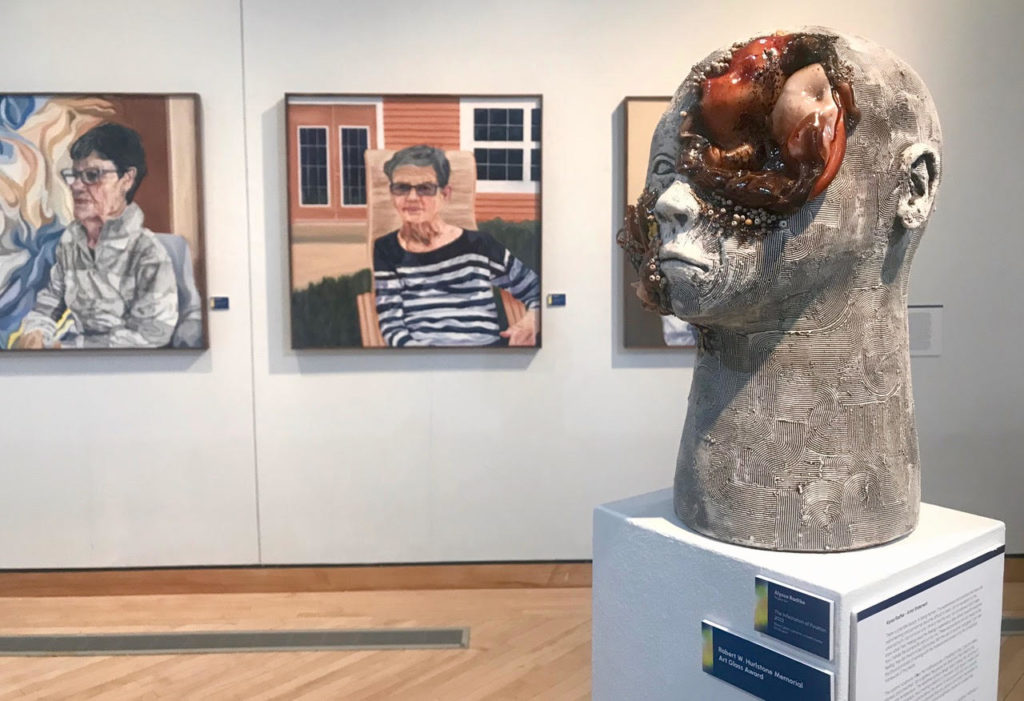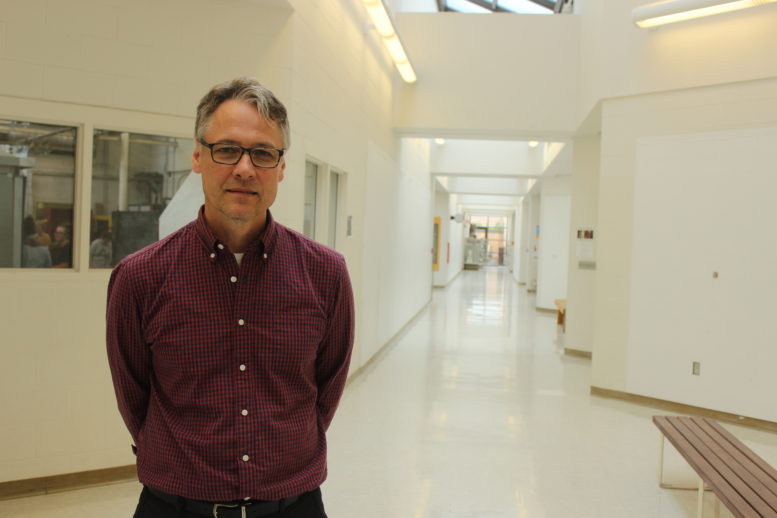By DAVID DUPONT
BG Independent News
The arts remain central to the mission of a public university.
Charles Kanwischer, director of the BGSU School of Art, told the Kiwanis club earlier this summer, that the school aims for providing an education that’s accessible to all students while maintaining high standards of excellence.
“Simply stated it’s the idea that students from less privileged backgrounds with fewer academic advantages have access to low cost but high-quality education in the arts and any other academic discipline. That schools like BGSU can be sites where young people maximize the full spectrum of their potential for the benefit of our society.”
Those graduates contribute, Kanwischer said, “to the cultural and economic vitality of our region. They start businesses and hire employees and generally improve the quality of life in our region, and that makes it easier for all businesses to attract employees.”

This aligns, he said, with President Rodney Rogers’ promotion of BGSU as “a public university for the public good.”
This idea permeates all the arts programs at BGSU: music, theater, film, creative writing, and dance.
“I find something very beautiful and inspiring in the idea that in the School of Art at BGSU less privileged kids from cities like Toledo. Sandusky Lima or Fremont can become painters, poets, and musicians.”
BGSU offers not only those traditional disciplines, he said, but also digital animation, graphic design, and the other emerging modes of expression.
The graduates also teach and go into business.
“It’s our job in the School of Art to provide them with technical training sufficient to share with society their individual talents and experience, or at least that’s what I take to be our operating mandate.”
And doing so at an affordable cost is central to the mission.
“We always have to be ready to show we are good stewards of resources and that we are producing a large return on the state’s investment in us,” he said.
“It’s been more than a decade since the school of art operating budget has increased.” That comes at a time when the school faces the same inflationary pressures as everyone else. It also comes at a time when emerging technology is transforming what they must teach.
“We are still supporting very traditional disciplines – painting, drawing and stone carving at the same time we have to get connected with digital arts media, virtual reality, augmented reality and artificial reality,” Kanwischer said. “Creating a fruitful partnership between the traditional media and the new media is a challenge. It’s a satisfying challenge when we pull it off.”
But the newest technology is expensive and needed to adequately prepare students to find jobs after graduation.
And the university is competing with industry when recruiting faculty in those disciplines.
One approach is to team up with other academic units to address new needs. A new minor in 3D design and marketing is a partnership of School of Art, the School of Architecture and the entrepreneurship program in the College of Business. This minor is a prototype for a major, he said.

The school also relies on benefactors, including the 40-year-old Medici Circle to help support students who wish to get experiences beyond campus that are essential to their education. The Wolfe Family Foundation has funded several scholarships that will pay all a student’s expenses, including housing and transportation, to study abroad.
Kanwischer’s belief in making public arts education came from his upbringing.
He grew up in Grace Lake, Illinois, an hour north of Chicago. His father was an artist who taught at a community college. His mother taught English in public junior and senior high schools. Kanwischer grew up surrounded by books and art supplies.
He was a product of public education and received his bachelor’s degree at the University of Iowa. Then he went off to Yale University to earn his Master of Fine Arts degree in painting and drawing. He stayed there to teach for two years and then took a position at Amherst College, a highly selective private liberal arts college.
“As a kid from the Midwest, I never felt completely home,” Kanwischer said. “At both Yale and Amherst, I taught students who had always excelled academically, had attended good schools, and always received strong parental support. They were good at everything.
“At Amherst, I had a student in art who completed an excellent thesis in painting and then, on a whim, applied to medical school,” he said. “Of course, he got in.”
When Kanwischer’s contract wasn’t renewed at Amherst, he went on the job market, and found the job at BGSU. He’s been a member of the faculty for 25 years, teaching drawing and painting, and for the past six years as director of the school.
He and his wife, Gwen Evans, found a warm and welcoming community. “My colleagues were very kind to me” particularly fellow painter Tom Hilty, who had been “a pillar of the school for 30 years” and Lou Krueger, who was the director of the school.
Krueger had also taught at a select private institution, Syracuse University, before coming to Bowling Green. They would talk about the differences in students.
BGSU students are often the first in their families to attend college. “They are not necessarily conversant in high culture and didn’t always know the names of artists and art movements,” Kanwischer said. “I remember being surprised when they told me they hadn’t traveled outside of Ohio.
“Lou and I agreed that what they did know how to do was work hard and when presented with the right opportunities and the right circumstances they blossomed,” he said.
“The pleasure of teaching at Bowl Green was developing ways to assist students realize their latent potential, essentially helping them believe in their talent and intelligence,” Kanwischer said. “Over the 25 years I’ve been at BGSU watching this process unfold again and again has been endlessly rejuvenating. Teaching at BGSU has been the privilege of my professional career.”
Without public universities such as BGSU, “art, poetry, theater, and music would become the exclusive privilege of those kids at Amherst and Yale, and those experiences of a large part of our society would be unheard,” he concluded. “That’s why I believe the most important task faced by arts programs today is to redefine excellence in the arts as a public good that contributes to democratic discourse, to assure that a diversity of voices is heard.”

